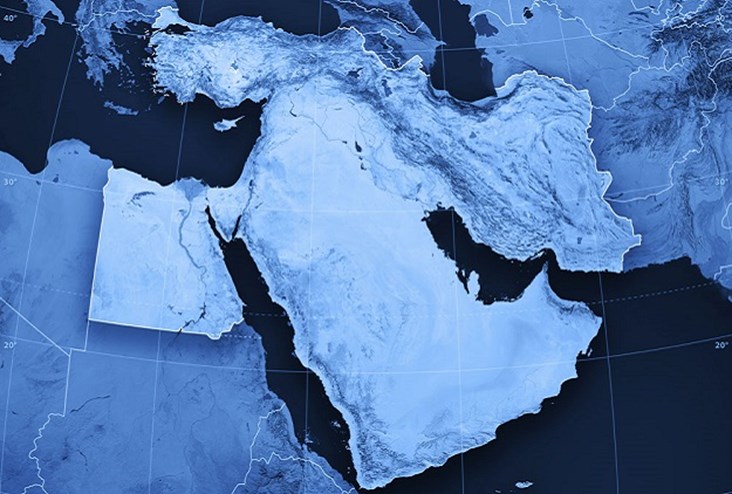Deloitte Report: TV's Business Model in a Digital Middle East
Back
Professional services firm Deloitte recently published a report that assesses the performance of television in the digital age; particularly, in light of the rise of subscription video on demand, online sport content, online short form video and face paced innovation that was brought on by the rise of the web.
The report concludes “television remains in fine health.” Despite good progress, subscription VOD still represents less than 2% of the pay TV market in Europe. Television also remains the primary destination for premium sports content; with rights values expected to grow further this year. Long form TV video also still dominates viewing hours and advertising, with long-form ads generating 40 times more than estimated revenues from video clips. TV also has a proven track record when it comes to tech innovation, and more so when it comes to its main function storytelling.
What about the Middle East?
The Middle East is experiencing similar trends, albeit with some distinction. Subscription VOD for instance is marginal, at less than 1% of the global market; it’s growth however is “much faster” by comparison.
Premium sports are set to outperform global sports in terms of growth for the second year running. YouTube is extremely popular but long form video is “still king” according to the report. Finally the report also notes that high smartphone penetration rates and high social media engagement combined with the region’s unique demographic are driving innovation in the field.
Now for a detailed look at each of the four segments. Starting with subscription VOD…
1. People that predicted the demise of TV programing were wrong
More so in the Middle East, where the share of subscription VOD is minute. 2015 is the thirty first anniversary of the first major VOD trial in Europe, and yet its market share remains negligible, especially in the region where subscriptions services significantly lag behind Western markets.
The reason is that subscription VOD offering in the region is limited, both in terms of the size and quality of the library of local providers. Alternative content is also bountiful; penetration of free-to-air TV channels across the region reaches 95%. What’s more, the high YouTube penetration rate - 70% - represents more of challenge to VOD providers than traditional TV stations.
Looking ahead...
As we mentioned earlier, subscription VOD is growing fast, and there are a number of other encouraging metrics as well. Around 25% of Middle East households have broadband subscriptions, 10% per cent have pay TV subscriptions, of which around 18% are already subscribed to an IPTV service. All these metrics have also exhibited double digit growth over the past 10 years. Consequently, the region’s market for SVOD will only continue to grow. Regional advances in infrastructure, also reinforce this trend. The report also notes that the advances are mainly concentrated in the GCC.
On the consumer side, there is a healthy demand for subscription VOD services, evidenced by healthy penetration of online video streaming - as much as 50% in key GCC and Levant markets - and consumer surveys that report their willingness to pay a premium for a high quality and differentiated content service.
Cord Cutting not an issue
Traditional broadcasters fear that customers who sign up for on demand services will cancel their traditional pay TV service, something known as ‘cord cutting’.
But based on observed behavior in the US and the UK, Deloitte expectes that most consumers will add VOD to their existing pay TV content and will see subscription VOD as an added service. There is a “typical human preference for accumulating rather than choosing between alternatives.”
2. Global premium sports rights show double-digit growth for a second year
$28 billion in 2015, a 12% increase from 2014. In the Middle East, Deloitte estimates starting in 2015 the value of premium region-specific sports rights will continue to increase by at least 20%, exceeding the 12 per cent rise of all premium sports rights estimated globally.
In fact, the survey shows that the increase in pay TV subscriptions is inspired by interest in sports content. For instance, in countries with the three largest domestic football leagues - Egypt, Saudi Arabia and UAE - 68% of pay TV subscriptions are to sports channels, followed by 55% to movies and 29% to TV shows.
3. Long-form is the foundation of traditional television, and it should stay that way
Unlike the web, traditional television is characterized by its long-form format: 30 minutes or an hour long programs. Online video clips, at ten minutes or shorter are highly popular. We’re already starting to see that ‘length’ permeate to the big screen especially with programs for young children. This is meant to accommodate for the lower-attention, multi-tasking younger generations.
The importance of long-form is even more evident in the Middle East
In 2013, MBC’s top 10 dramas alone amassed more than 0.6 billion viewers, ranging from 48 million to over 123 million viewers. The most prolific of the regional short-form success cases reach tens of millions of viewers at most. This means that long-form has between 10 and 100 times more viewers.
The difference is also present online. Time spent online is typically 2.17 hours per day, by contrast, average time spent watching traditional television is 3.11 hours. So on average,
viewers spend almost an hour more per day on long form television than on short-form television.
Consumers also treat short form as a distinct proposition. They are more likely to access it at different times, places and devices. In Saudi Arabia for example, 50% of short-form YouTube
content is accessed via a mobile device, in the UAE, 40%.
Short form also appears to be more appealing to the youth: 50% of daily YouTube users are under 35 years, 35% are aged 35 to 44 years, 15% are aged 45 years or more.
Short form’s success
There are two reasons behind the popularity of short form video in the Middle East. First, it is widely perceived to be “more authentic, uncensored and trustworthy.” Second, It is more interactive. In a survey in the UAE, 75% said they are using YouTube not only to view videos, but also to communicate with friends and other users. In KSA, 35% said that they have uploaded their own short form content.
4. Can TV innovate?
The television industry in the Middle East has made progress in embracing technology and digital to enhance content and viewership, either by mimicking global innovations or by adopting homegrown creativity.
4K and Smart TVs are very popular in the region. The rapid adoption of smartphones has also opened up opportunities to innovate with the smaller screen. 70% of MBC’s Shahid.net viewers access their website through their mobile phones. Social media also plays a big role: an 8.5% increase in tweets for a premiere episode, and a 4.2% increase for a mid season episode correspond to a one per cent increase in a show’s boost in its ratings.
The high smartphone penetration and the popularity of social media has inspired the rise of social TV: an emerging trend in the region which combines social media usage with TV watching trends, like Al Jazeera’s The Stream and Peeta Planet.
Advertising
Over the last 5 years, total TV ad spend, as a percentage of total advertising spend and compared to other media platforms, has remained around 40%. Even in light of the high
growth in digital platforms, television’s total advertising spend will still be four times larger than that of digital in 2015, projected at 40% and 10% respectively. In the Middle East, total television advertising revenues are expected to surpass $2.6 billion by 2019.
RELATED:
Mobile Trends of 2014 Summarized into 9 Points by the App Annie Report
Latest Business
Intelligence Report














